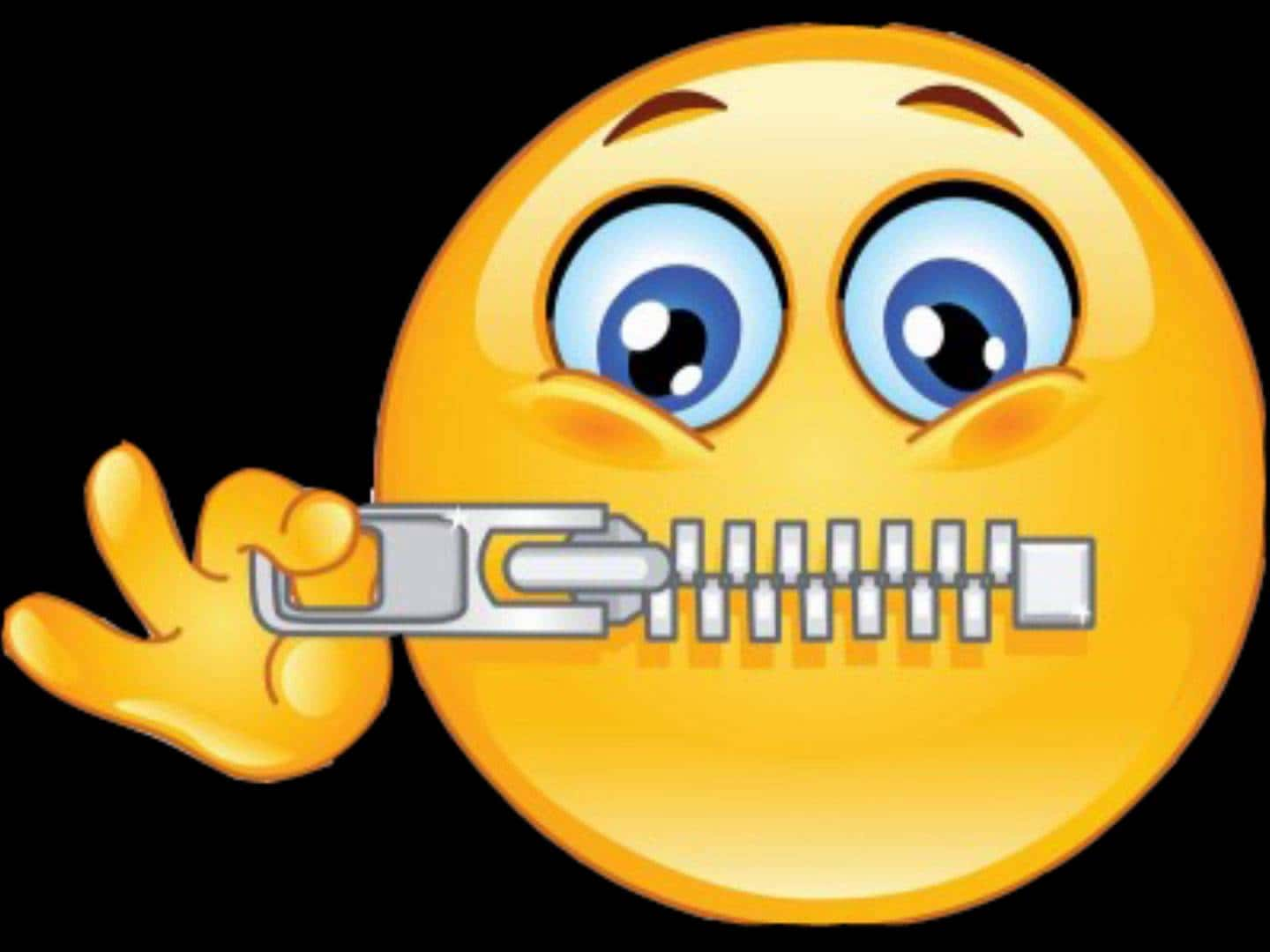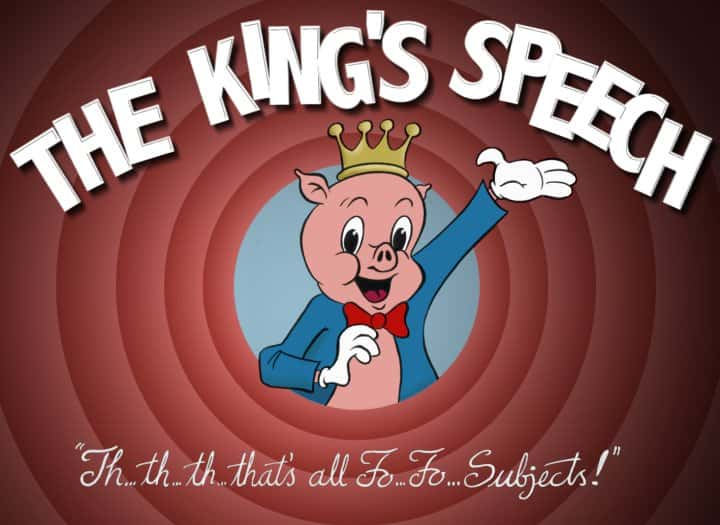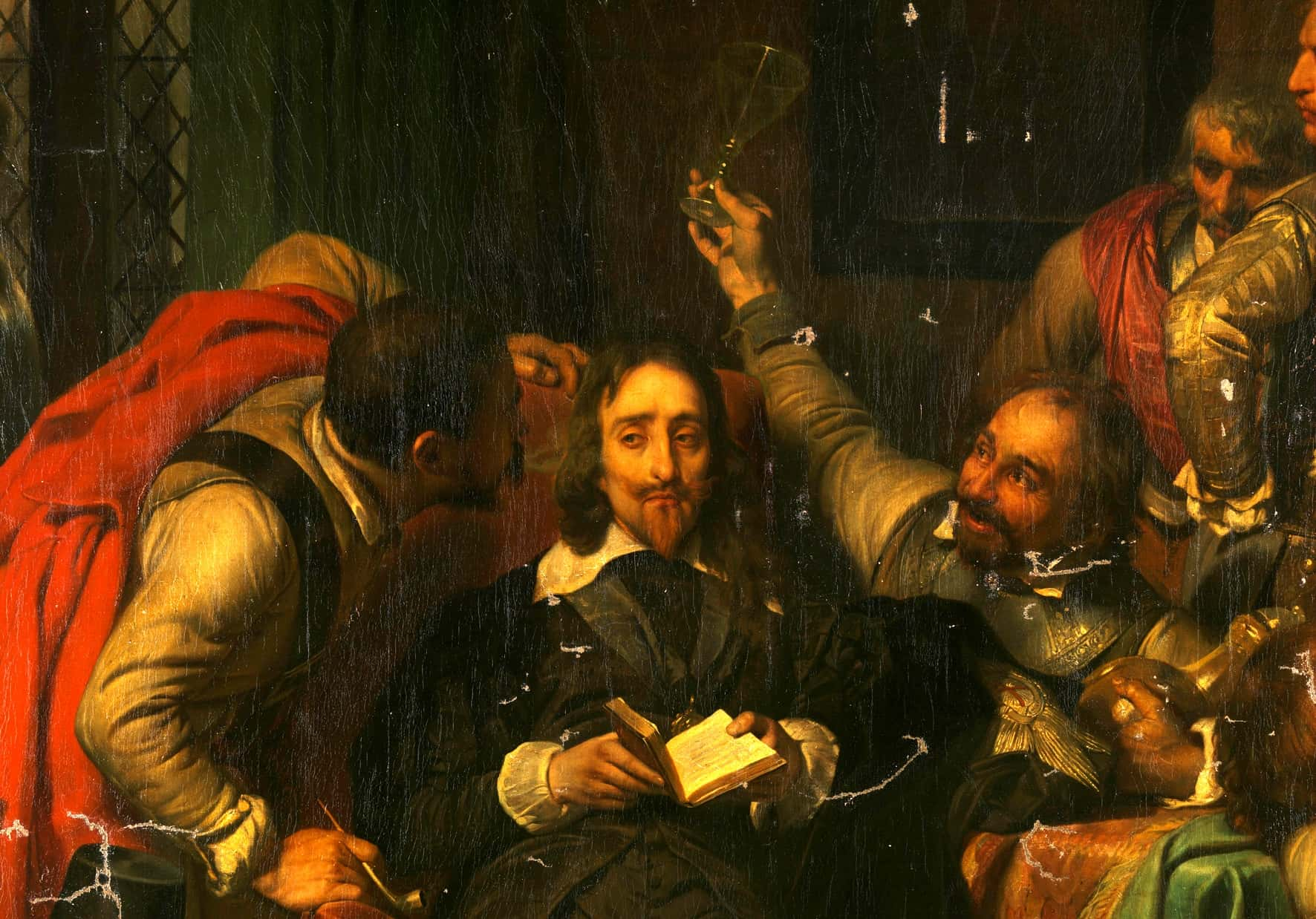"Sweet-heart, now they will cut off thy father's head. Mark, child, what I say: they will cut off my head, and perhaps make thee a king. But mark what I say: you must not be a king, so long as your brothers Charles and James do live"—Charles I, spoken to his son prior to his execution.
1. One Kingdom Wasn’t Enough!
Charles I wasn’t just the king of England. He was also the king of Wales, Scotland, and Ireland. This was before the Irish would gain their independence in the 20th century, of course.
 Google News
Google News
2. Regime Change
The only reason that Charles’ family was in possession of the Irish and English thrones was the fact that Queen Elizabeth I of England had died childless (makes sense really; she wasn’t called the Virgin Queen for nothing). James of Scotland was designated her heir as per an agreement they made, so the throne of England passed from the Tudors to the Stuarts.
3. Time of Death
As some of you will know, Charles I of England was executed outside of the Whitehall Banqueting House in London, on the 30th of January 1649. He was 48 years old.
4. Time of Birth
As fewer of you will know, Charles was born on the 19th of November 1600, in Dunfermline, Scotland.

5. You D-D-Don’t Say!
As a child, Charles was frequently ill. One side effect was that he had a speech impediment due to developmental issues. Even when he recovered from said issues, Charles had a stammer for the rest of his life.
6. How About a Painting of London Bridge?!
Like many rich people, Charles I was a patron of the arts. Not only did he purchase paintings by such esteemed artists as Raphael and Titian, he actually brought other legends like Van Dyck and Rubens to England and invited them to paint there.
 pinterest
pinterest
7. Left Behind
When Charles’ father, James VI of Scotland, became James I of England, he went south from Scotland with all his family. However, Charles was deemed too sick to make the journey with his parents and siblings. He was left behind with Lord Fyvie, a friend of his father who served as a guardian to the boy.
8. Will He Walk 500 Miles? What About 500 More?
Charles eventually became fit enough for the journey to England when he was a toddler of three and a half. This was determined after he could walk from one end of Dunfermline Palace’s great hall to the other without needing any help. We just hope that the little tyke didn’t have to then walk all the way to England!

9. Was He Also a Lion-Shooting Dentist?
Despite his childhood illnesses, Charles I overcame adversity and eventually became proficient at fencing, shooting, and horseback riding. All he’d need to add is polo and croquet and he’d have scored Rich White Person Bingo!
10. Call That a Promotion?
Charles I was actually the second son of King James I. His older brother, Henry, died of sickness in 1612 at the age of 18 while their father was still alive. Charles thus became heir to his father instead.
11. I Call That a Bargain!
In the final chapter of the English Civil War, Charles was actually a captive of Scottish forces. After nine months, the Scots got an offer of 100,000 pounds if they turned Charles over to English captivity and returned home. Amazingly, the Scots agreed, handed Charles over, and returned to Scotland, presumably thinking that they’d gotten a great deal out of the war!
12. No Hard Feelings
Despite the earlier treachery for money, though, Charles I turned once again to Scottish support while he was in captivity. In December 1647, Charles forged a secret treaty where he would permit the Presbyterian faith in Scotland if they would invade England and put him back on the throne. Those Scots certainly drove an easy bargain for once!
13. Almost an Even Dozen
From 1629 until 1640, Charles I actually ruled England without a parliament. He had become so fed up with that parallel power that he found a loophole which said he could rule England alone as long as he could keep the nation at peace. So while he did cease war with France and Spain, this period of time without parliament has been called the Eleven Years Tyranny.
14. There’s Blood on Those Paintings!
By the time of Charles I’s execution, he had acquired 1,760 paintings in one of the largest private art collections of the period. The majority of these paintings were sold off by the English parliament in what must have been either the most prestigious yard sale ever or the most awkward auction ever held.
15. Some Things Never Changes (and Others Do)
Despite the 1647 deal with the Scots, Charles bet on the wrong horse again; the Second English Civil War was much shorter than the first one. Parliamentary forces defeated the royalists for good in August 1648. That same year, the English parliament purged itself of any members who were opposed to a trial of Charles I, forming what was known as the Rump Parliament.
16. Love Conquers All
While Charles I was a Protestant by faith, he ended up marrying a Roman Catholic. Keep in mind that this was a time when England and Spain had spent half a century embroiled in conflict, and the rulers of England had alternated between Protestant and Catholic, with each side persecuting the other. In contrast to all that turmoil, however, Charles and Princess Henrietta Marie of France had a mostly happy marriage.
17. Those Damn Scots…
The Eleven Years Tyranny, with English parliament remaining dissolved thanks to Charles’ loophole, ironically came to an end thanks to Scottish bishops giving Charles a headache. Charles had stirred up the Church of Scotland by pushing The Book of Common Prayer on them in an act of reformation. In response, the Scottish Bishops’ Wars began, which eventually forced Charles to call for parliament to be formed in 1640.
18. We WILL Have a Voice!
Once parliament had finally been called by Charles again in 1640, he was greatly frustrated when they closed the loophole which he’d used to shut them out for eleven years (maybe they got sick of vacation pay?). They passed acts which declared that parliament couldn’t be dissolved without their consent and England couldn’t go more than three years with a dissolved parliament. Well Charles, it was nice when it lasted.
19. Childhood Titles
Before Charles was heir to his father’s title and throne, he was given the traditional title of Duke of York (traditional in the sense that all second sons in the royal family get that title). Charles was also appointed Knight of Bath and a Knight of the Garter. All before he was 12 years old, mind you!
20. Rated 16A
Although Charles’ brother died just two weeks before Charles’ 12th birthday, he wasn’t named the Prince of Wales until he was 16 years old. Maybe that title needs to be grown into before you get it?
21. Money, Money, Money!
Charles I spent the Eleven Years Tyranny making enemies thanks to his desire for money through new taxes. When England was at war, the coastal residents had traditionally been given a tax known as Ship Money. Charles, meanwhile, imposed the Ship Money tax during peacetime, which frustrated more than a few people.
22. You’re Cut Off, Charlie!
Despite that outcry, however, Charles’ Ship Money made him a lot of, well, money. This came to an end when parliament was called again in 1640 and they had Charles abolish all the new taxes which he’d installed during the Eleven Years Tyranny. As you can imagine, he wasn’t too happy with parliament over that!
23. I Don’t Have to Listen to This, I’m a God!!!
Charles, like his father, believed that kings had a divine right to rule. This put him above the law and above the need to explain himself. Of course, this was a belief which didn’t do him any favors during his trial (more on that later).
24. Don’t Anger the Scots
Despite being born in Scotland and spending the first three and a half years of his life there, Charles didn’t return to the highlands until 1633 for his coronation as King of Scotland. He ended up angering many Scots by insisting on an Anglican ceremony. In fact, Charles was accused of pushing the Anglican branch of Protestantism on the Scottish population, which led to the troubles in Charles’ later reign.
25. Now it’s the Irish?!!
The final straw between Charles I and the English parliament came during the Irish Uprising of 1641. The king and parliament each had their own ideas on how the army should be used to restore peace in Ireland, and who should be given command of said forces. Eventually, Charles had enough of the many critics he had in parliament and he moved to arrest five of the worst of them. However, those five members of parliament got word of Charles’ plans and fled before they could be apprehended.
26. It’s on Now!
When Charles I arrived to arrest his five leading opponents in the English parliament, he demanded to know their whereabouts when he discovered that they’d escaped. In a famous act of defiance, the Speaker refused to tell Charles where he could find those five missing rascals. In early 1642, Charles left London to raise an army against parliament. This was the start of the English Civil War.
 Stanford Graduate School of Business
Stanford Graduate School of Business
27. Oops…
When Charles’ army was being pushed back by parliamentary forces at the 1645 Battle of Naseby, Charles tried to turn the tide back to his side by leading his forces from the front. However, as he rode forward, Lord Carnwath stopped him out of fear that the king would be killed or captured because of his inflated sense of heroism. Despite Carnwath’s intentions, the sight of the king being pulled away from the fight was taken as a sign by the rest of the army to retreat. The parliamentary forces were able to make Naseby a victory because of this unintended help from Carnwath!
28. You, Commoner! Switch Clothes with Me!
The English Civil War led to some very near misses for Charles I as he led his armies against the parliamentary forces. The 1646 siege of Oxford was especially embarrassing for Charles; he was forced to flee the city while dressed up in servants’ clothes!
29. Old Habits Die Hard
When setting up a treason trial against the captured Charles I, the English parliament found a lot of opposition. Three Chief Justices all declared that the action was unlawful, and the High Court’s 135 commissioners were reduced down to 68 when the others either avoided the trial or straight up refused to take any part.
30. Death to the Spanish!
One of the most unpopular acts of Charles’ life was his negotiations with Spain. Spain had previously been England’s most dangerous enemy during the reign of Queen Elizabeth I, and the population had long memories. Charles had to resort to stealth, even from his own people, when he conducted discussions of treaties with Spain. He even dissolved parliament in 1622 when they protested his foreign policy and he tried and failed to restrict their free speech.
31. Stick to Your Principles!
In an act of supreme awkwardness, Charles went through his 1626 coronation as King of England without his wife beside him. Henrietta Marie refused to take part in a non-Catholic ritual, even if it was in the service of making her Queen of England! Talk about stubborn!
32. Odds Are Against You, Sire
The charge of treason against Charles rested on his use of power towards fulfilling his own selfish interests instead of actually improving the lives of his people. The fact that around 6% of England’s entire population had died during the English Civil War didn’t help things look better!
33. Quite a Defense, Majesty…
When it came time to defend himself from the accusations at his trial, Charles I outright refused to participate in a court he didn’t recognize. He considered the proceedings to have no authority or right to try him. Eventually, he would be removed from the court while witnesses testified against his character directly to those part of the trial.

34. What a Hero! A Dead Hero!
Charles, meanwhile, became a martyr for the royalist cause after his execution. A book titled Eikon Basilike was released under the claim that it had been written by Charles before his death. The book tried to justify Charles’ actions and policies. It also urged the public to forgive Charles’ killers (safe to say that it was less an act of charity and more an act of passive aggression).
 pinterest
pinterest
35. Prince Opportunist
As you can imagine, many in England had an issue or two with Charles marrying a Catholic girl, let alone a French princess! Charles assured the English populace that he wouldn’t lift any anti-Catholic laws as a result of his marriage. However, in a secret treaty with King Louis XIII of France (his new brother-in-law), Charles not only agreed to relax Catholic restriction, he also provided English ships to help the French persecute their Huguenot population in 1625.

36. My Number One Guy!
One of Charles’ favored subjected was the Duke of Buckingham, who had been involved in the negotiations with Spain, and then later a failed military expedition by a then-king Charles. Buckingham was assassinated on the 23rd of August 1628. In a moment which foreshadowed the extreme divide between king and country, Charles was devastated at Buckingham’s death, mourning for days. Meanwhile, the general population was rejoicing at the news of Buckingham’s death (people were a lot stricter about military failures back then).
37. Bloody History
Even after Charles I was executed, and two civil wars had been fought, the English still had the stomach to fight another one! The third English Civil War resulted in the military triumph of Oliver Cromwell, who disbanded the Rump Parliament, devastated Ireland’s population, abolished the monarchy, and assumed the dictatorial position of Lord Protector until his death.
38. This is the End…
When the time came for Charles’ execution, his wife and most of his children had long since fled England and weren’t able or willing to return for a final goodbye. However, two of his kids, Henry and Elizabeth, were being held by the new authorities in comfort. They were permitted to visit their father for a tearful goodbye just a day before Charles’ execution was scheduled to take place.
39. Were They Red Shirts?
On the morning of his execution, Charles made a request of his captors for two shirts instead of the traditional one. Given the cold January weather, Charles didn’t want to shiver while he was being executed. He feared that everyone would accuse him of cowardice if they saw him trembling from the cold. Given that he was walking to his execution, we can only assume that Charles also insisted on wearing brown pants that day!
40. Can’t Get No Luck!
Two of Charles’ sons would go on to become King of England, Scotland, and Ireland after the death of Oliver Cromwell. Charles II and James II were both Catholic, however, and James was particularly insistent on his religion. This led to the Glorious Revolution, when James II was deposed and replaced by the Dutch king William III, who was the son of Charles I’s daughter, Mary. To add insult to injury, William III was married to James II’s Protestant daughter, who was also named Mary!
41. The Black Hour
Opposite the Banqueting Hall where Charles I was executed, the Horse Guards Parade archway has a rather interesting tribute to the dead king, at least according to legend. Visitors to said archway will notice a large clock which contains a black mark on the clock’s face at the 2 pm mark. This is said to be a commemoration of the exact time in the day when Charles I was killed.

42. No Bragging Rights, Please!
Charles’ executioner was masked to hide his identity. As you can assume, nobody wanted to take the credit (or the blame) for executing a King, given the whole "divine right" thing, but based on the cut of the axe on Charles’ neck, it was determined that the executioner was clearly an experienced professional (this was back when cutting off heads could be considered a professional career). Moreover, it was a custom in those days for the executioner to hold up the severed head and declare “Behold the head of a traitor!” In another act of anonymity, the executioner held up Charles’ head, but said nothing in an attempt to hide his voice (or her voice? You never know!).
 youtube
youtube











































